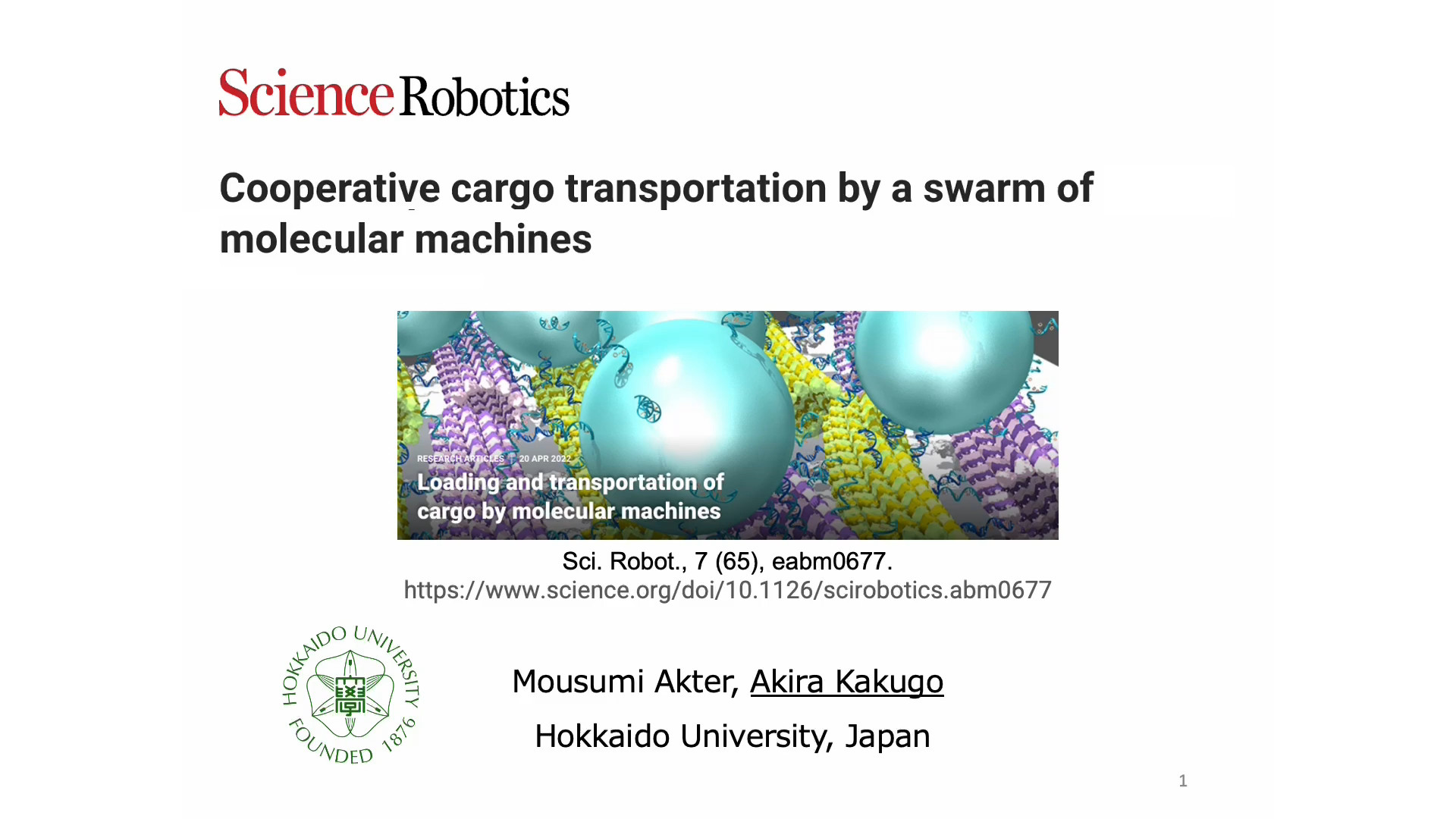Enhancing the safety of autonomous vehicles in critical scenarios
Power Conversion Breakthroughs Fuel a Robot Revolution
Chess-playing robot breaks child’s finger at Moscow event
AGV and AMR Technology: Solving Your Internal Logistics Challenges
The Omnid Mocobots: New mobile robots for safe and effective collaboration
Cooperative cargo transportation by a swarm of molecular machines

Dr. Akira Kakugo and his team from Hokkaido University in Japan sent us a video presentation of his recent paper ‘Cooperative cargo transportation by a swarm of molecular machines’, published in Science Robotics.
‘Despite the advancements in macro-scale robots, the development of a large number of small-size robots is still challenging, which is crucial to enhance the scalability of swarm robots,’ says Dr. Kakugo. In the paper, researchers showed it is possible to collectively transport molecular cargo by a swarm of artificial molecular robots (engineered systems with biological/molecular sensors, processors and actuators) responding to light.
Underwater Human-Robot Interaction #ICRA2022
How do people communicate when they are underwater? With body language, of course.
Marine environments present a unique set of challenges that render several technologies that were developed for land applications completely useless. Communicating using sound, or at least as people use sound to communicate, is one of them.
Michael Fulton tackles this challenge with his presentation at ICRA 2022 by using body language to communicate with an AUV underwater. Tune in for more.
His poster can be viewed here.
Michael Fulton
Michael Fulton is a Ph.D. Candidate at the University of Minnesota Twin Cities. His research focuses primarily on underwater robotics with a focus on applications where robots work with humans. Specifically, human-robot interaction and robot perception using computer vision and deep learning, with the intent of creating systems that can work collaboratively with humans in challenging environments.